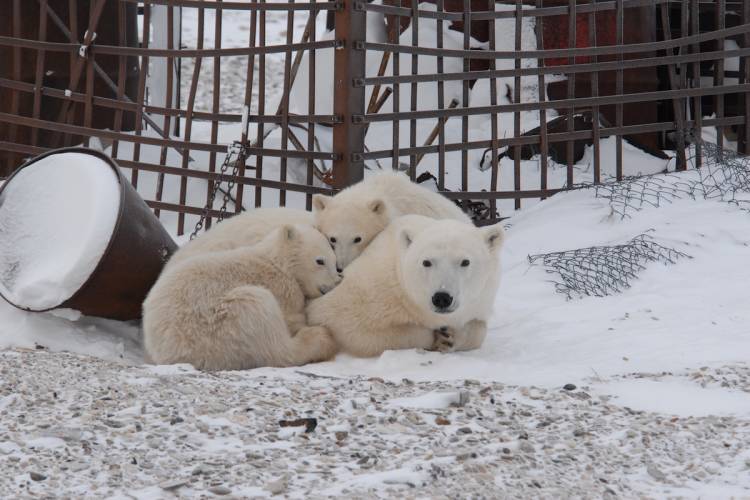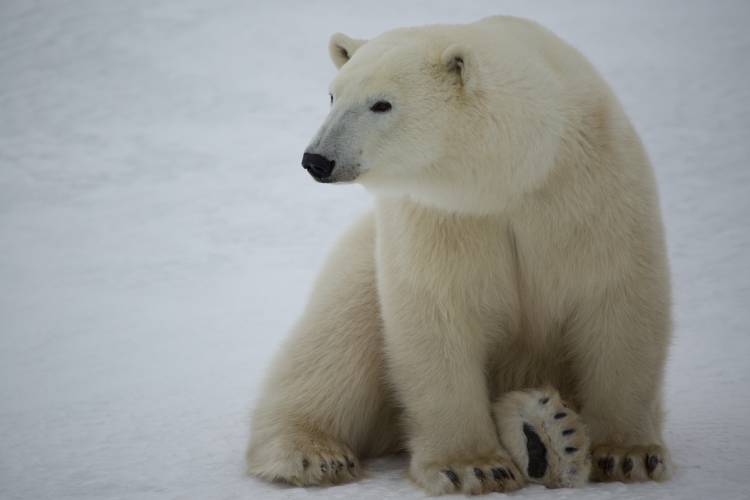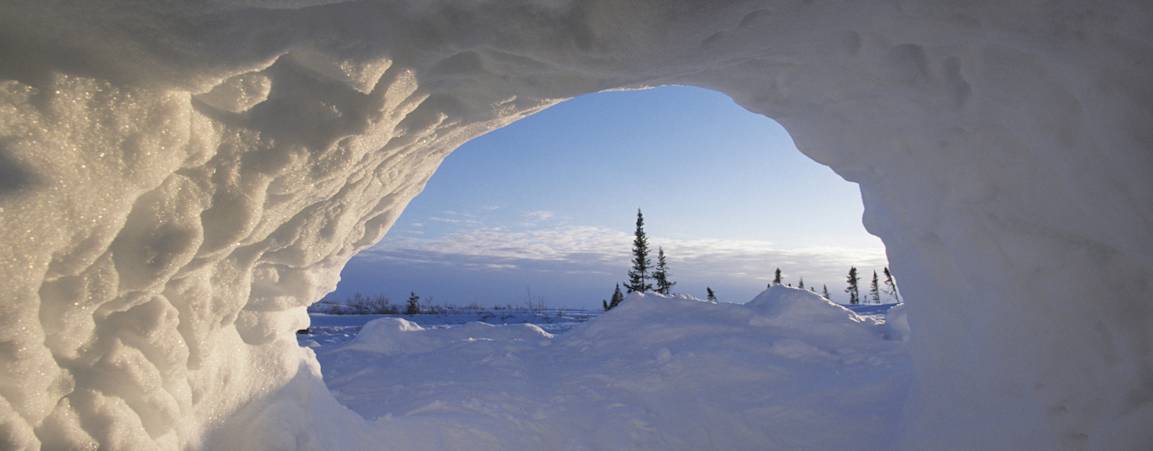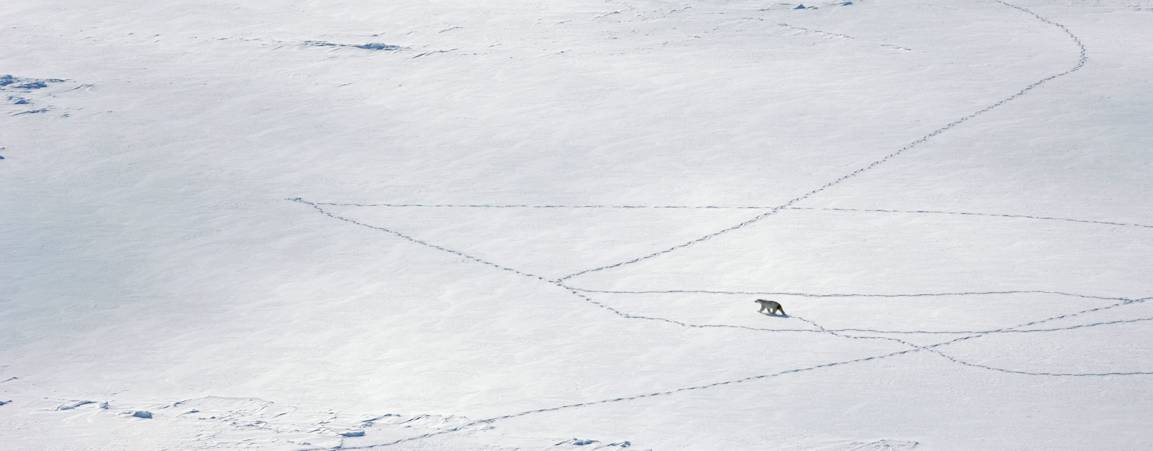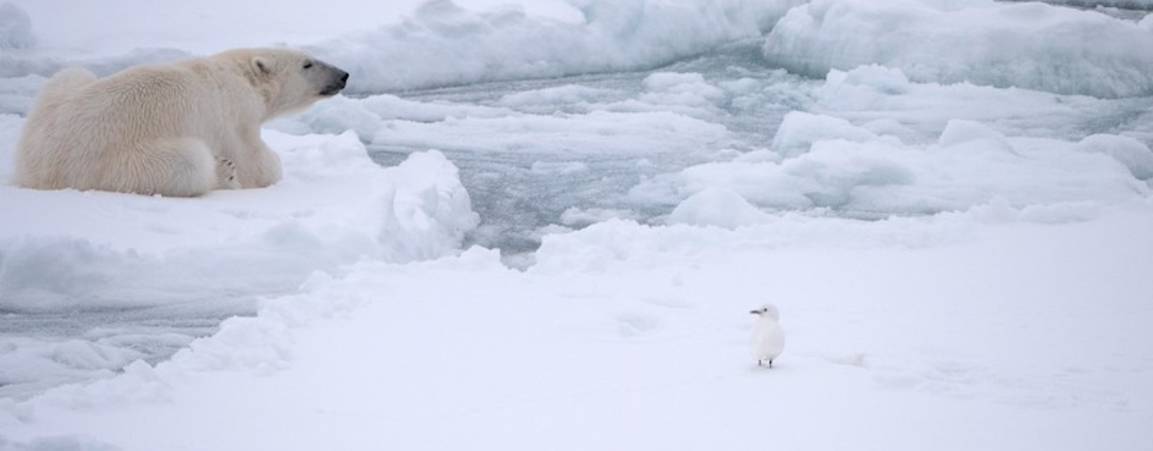Human-Bear Coexistence
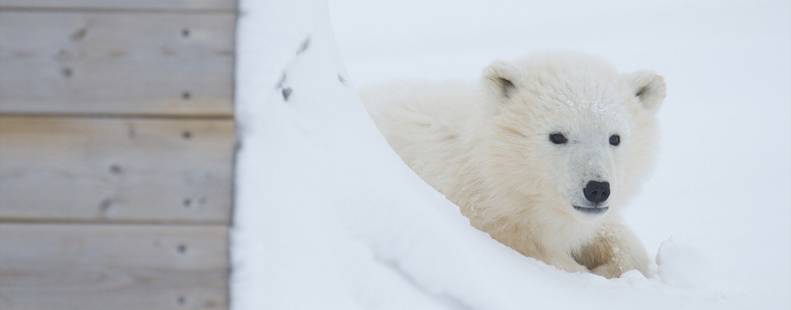
Photo: Daniel J. Cox
Learn about the research we are doing to help polar bears and people live safely with each other.
In the Arctic, conflict between polar bears and people is on the rise and expected to increase as sea ice habitat shrinks. In regions with large summer sea ice loss, polar bears are becoming more frequent visitors to land and staying for longer periods of time. At the same time, human activity is increasing in the region.
Without careful planning and management, tragic outcomes are inevitable, for both polar bears and people.
Polar Bears International is working on a number of fronts to stay ahead of the curve. Working with a range of partners, including Arctic communities, we are researching ways to reduce polar bear-human encounters and greatly minimize negative outcomes.
Bear-dar “Detect and Protect” Systems
For the past couple of years, Polar Bears International has been testing whether ground-based radar could be used to detect polar bears, serving as an early warning system that could alert communities or work sites to approaching bears, part of our ongoing efforts to protect polar bears and people, keeping both safe.
The Town of Churchill, Canada, is an ideal place for testing this equipment because polar bears reliably gather there each fall as they wait for the sea ice to form. We are currently testing several different types of radar. The systems range from simple to complex, with some of the devices better for use in camps, others better for towns.
Our goals are to determine the effectiveness of these early warning systems; train the devices to recognize polar bears (vs. dogs or cars or other moving objects); and then share the findings with Arctic communities and those working or traveling in bear country.
Project partners include the Town of Churchill, SpotterRF, Hensoldt, Ohio State University, Brigham Young University, Utah’s Hogle Zoo, and San Diego Zoo Wildlife Alliance. Project funding includes RBC Tech for Nature and Utah’s Hogle Zoo.


“We are delighted to partner in an innovative effort to refine and deploy ground-based wireless radar networks for detecting approaching polar bears. Working together, we can make a real difference in helping polar bears and people coexist.”
- Dr. Anish Arora, Professor and Chair, Computer Science and Engineering Department, Ohio State University
Best Deterrence Methods
Bear spray. Cracker shells. Loud shouts. What are the best ways to stay safe during an encounter with a polar bear? Protocols are well-established for brown and black bears, but less well-known for polar bears. This is largely because human-polar bear encounters are a recent phenomenon in many Arctic coastal communities.
Working with partners, we are researching the effectiveness of various deterrents in defusing an encounter with a polar bear. Our goal is to share standardized safety messaging, based on the best available science, to keep polar bears and people safe across the North.
These efforts include a recent study, led by Dr. Tom Smith of Brigham Young University, and supported by our team, on the efficacy of bear spray in polar bear country. The research team conducted lab research on how well bear spray performed in Arctic conditions, including wind and cold, and found it to be effective in all conditions. The takeaway: Everyone should carry bear spray when in bear country.
Project partners on the bear spray study include Brigham Young University, and University of Utah. Research on other deterrents will include novel tools like strobe lights, handheld flares, scents, and sounds.
Waste Management
It’s well known with black and brown bears that properly managing waste can help reduce conflict. In the past, this has not been a problem in many northern communities, but changing sea ice patterns are causing more polar bears to come ashore in more places, where they’re drawn to attractants, including food waste.
In response, we initiated an overview publication on polar bears and landfills led by Dr. Tom Smith at Brigham Young University with partners from several institutions and are launching a waste management project to examine innovative ways to reduce attractants to polar bears. This is important because waste management is a problem across the North. Burying is not possible or sustainable in settings with frozen soils and impossible in bedrock. Yet open dumps are an invitation to trouble, leading to problem bears, conflict, and frequently increased mortality. They are also a concern for disease as several species co-occur at landfill sites.
This initial study will assess available options and their costs, providing communities with ideas on the tools as they consider future options.
Project partners include the Town of Churchill, Canada.
Polar Bear Attacks and Causes
Understanding the causes of polar bear attacks on people is critical to ensuring both human safety and polar bear conservation. As part of his participation in the Polar Bear Range States Conflict Working Group, our senior director of conservation, Geoff York, contributed to a comprehensive study on the frequency and causes of polar bear attacks. The study, led by Dr. James Wilder of the U.S. Fish and Wildlife Service with co-authors from the Range States Conflict Working Group, collected, researched, and analyzed published accounts of polar bear attacks on humans in the time period from 1870 to 2014.
The findings added greatly to our understanding of why polar bears attack people. The report’s authors found that “nutritionally stressed adult male polar bears were the most likely to pose threats to human safety” with 61 percent of bears that attacked humans in below-average body condition.
As the Arctic warms, and more polar bears in poor body condition spend more time on shore, in close proximity to people, attacks are expected to increase. Careful planning now can help communities adapt.
Project partners include the U.S. Fish and Wildlife Service and the Polar Bear Range States Conflict Working Group, composed of members from the five polar bear “range states”: Canada, Greenland, Norway (Svalbard), Russia, and the U.S.

